Welcome to How to Resist, a blueprint for resistance based on nonviolence, mutual aid, and community building for ordinary people who want to save democracy.
(Listen to today’s post by pressing the play button above.)
Dear Resisters,
In a political climate where the news cycle moves at breakneck speed and yesterday’s outrage is quickly eclipsed by today’s scandal, remembering becomes a radical act.
That’s the premise behind a new public art installation in Brooklyn: the Wall of Shame, a 50-foot-long, 10-foot-tall mural created by artist Phil Buehler, which documents the names, faces, and actions of more than 1,575 individuals involved in the January 6th attack on the U.S. Capitol— many of whom were pardoned by Donald Trump as one of his first acts in returning to office.
The stories of these individuals run the whole gamut: Guy Reffitt, 48, from Wylie, Texas, allegedly told his family that he had taken his gun to the US Capitol on January 6th and said to his child: “If you turn me in, you’re a traitor. And you know what happens to traitors. Traitors get shot.” But Pamela Hemphill, 68, from Boise, Idaho (who we’ve met before here at How to Resist) refused Trump’s pardon and expressed remorse, describing the police as “heroes” and the rioters as “very dangerous people”.
Buehler spent over 100 hours compiling the data, fact-checking each entry using publicly available records and reporting from National Public Radio (NPR). The result is a mural that transforms abstract statistics into human stories, some disturbing, some tragic, and a few, like that of Pamela Hemphill, unexpectedly redemptive.
This is not Buehler’s first foray into political art. His earlier projects with Radio Free Brooklyn include the Wall of Lies (2020), which cataloged 20,000 lies told by Trump during his first term, and the Wall of Liars and Deniers (2022), which spotlighted Republican candidates who denied the legitimacy of the 2020 election.
When the Wall of Lies was defaced by the Proud Boys, the local community responded by cutting out the graffiti, spray-painting hearts over the damage, and raising funds for an even larger mural. As Buehler puts it, “Community gives you courage.”
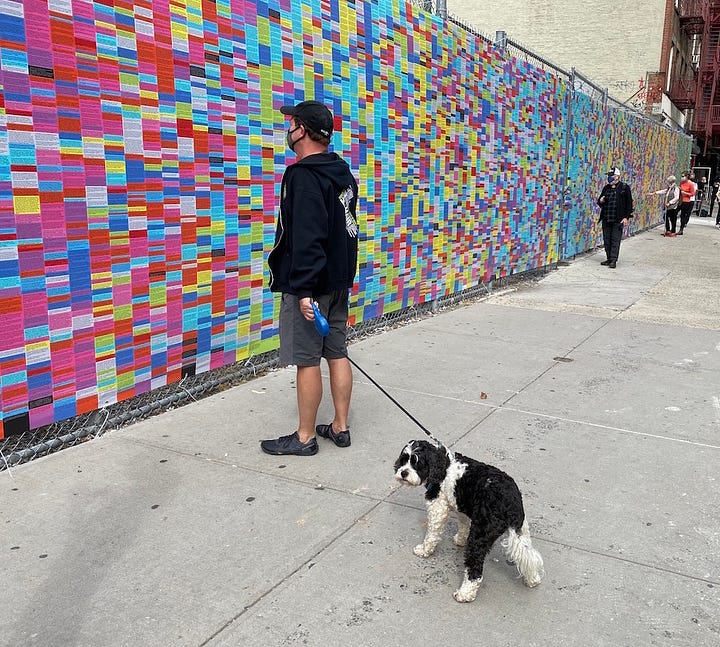
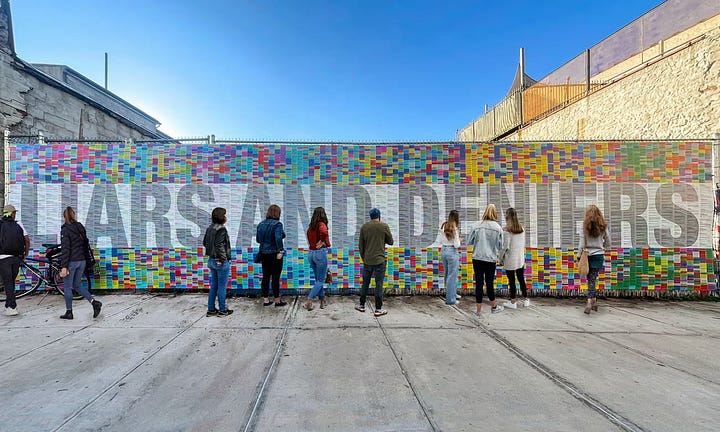
Art as Resistance
Art as a tool of resistance is an idea I talk a lot about in this substack, because aart has the ability to do something so unique and so incredible. It can communicate in an instant the feeling of something, it can articulate something we might not otherwise be able to, and it has the ability to reclaim symbols of power. With the deliberate selection of red, white, and blue color coding, the Wall of Shame presents itself as a sort of distorted American flag. As Rob Prichard of Radio Free Brooklyn, who partnered with Beuhler on this project, said. “We’re not ceding the red, white, and blue. We claim it and we claim the true meaning of representative democracy.”
In a time when Trump’s administration has sought to control cultural institutions and rewrite history, this mural stands as a fact-based, historial counter-narrative, grounded in public accountability.
Prichard, whose mother was forced into the Hitler Youth as a child, sees chilling parallels between past and present. But he also sees hope. “Autocracy and fascism are predicated on violence and the threat of violence. [But] they can’t be maintained forever. The fever has to break.”
Public Memory as Resistance
Authoritarian regimes thrive on erasure and distortion. They rewrite history, redefine patriotism, and flood the public sphere with misinformation. Trump’s political career has been built on straight-up lies and his undeniable talent for controlling the public narrative.
In this environment, public memory becomes a form of resistance. Projects like the Wall of Shame challenge the collective amnesia that authoritarianism depends on. Projects like these insist on truth, accountability, and visibility. Public memory, especially when vividly rendered through art, helps anchor that truth in the public consciousness and demands space for reflection, dialogue, and critical inquiry.
I love this piece, and think it’s such a powerful reminder that we don’t have to match authoritarianism’s aggression to fight back. We can resist by telling the truth, refusing to be distracted, and refusing to forget.
M-.
Support How to Resist
As a librarian writing in the service of democracy, I’m determined to keep How to Resist free to read and publicly available for everyone.
Producing How to Resist, however, is not free, and with fewer than 1% of readers supporting How to Resist with a paid subscription, we are still a long way from being fully funded.
If this work matters to you and you’re able to support it, please consider a paid subscription and help keep How to Resist going for as long as it’s needed.
Prefer a one-time contribution? You can donate at ko-fi.com/howtoresist
Want more from How to Resist?
Check out these series:
Take Action: Mutual aid and community-building ideas you can try today
Tools of Resistance: Tactics of nonviolent resistance, past and present
Better Political Conversations: Strategies for engaging across divides without compromising your values or your relationships
Good News from the Resistance: Sunday morning news roundup of good news
Sources
https://www.theguardian.com/us-news/2025/jul/07/wall-of-shame-january-6-pardons
https://www.radiofreebrooklyn.org/wall-of-shame-to-launch-on-the-fourth-of-july/



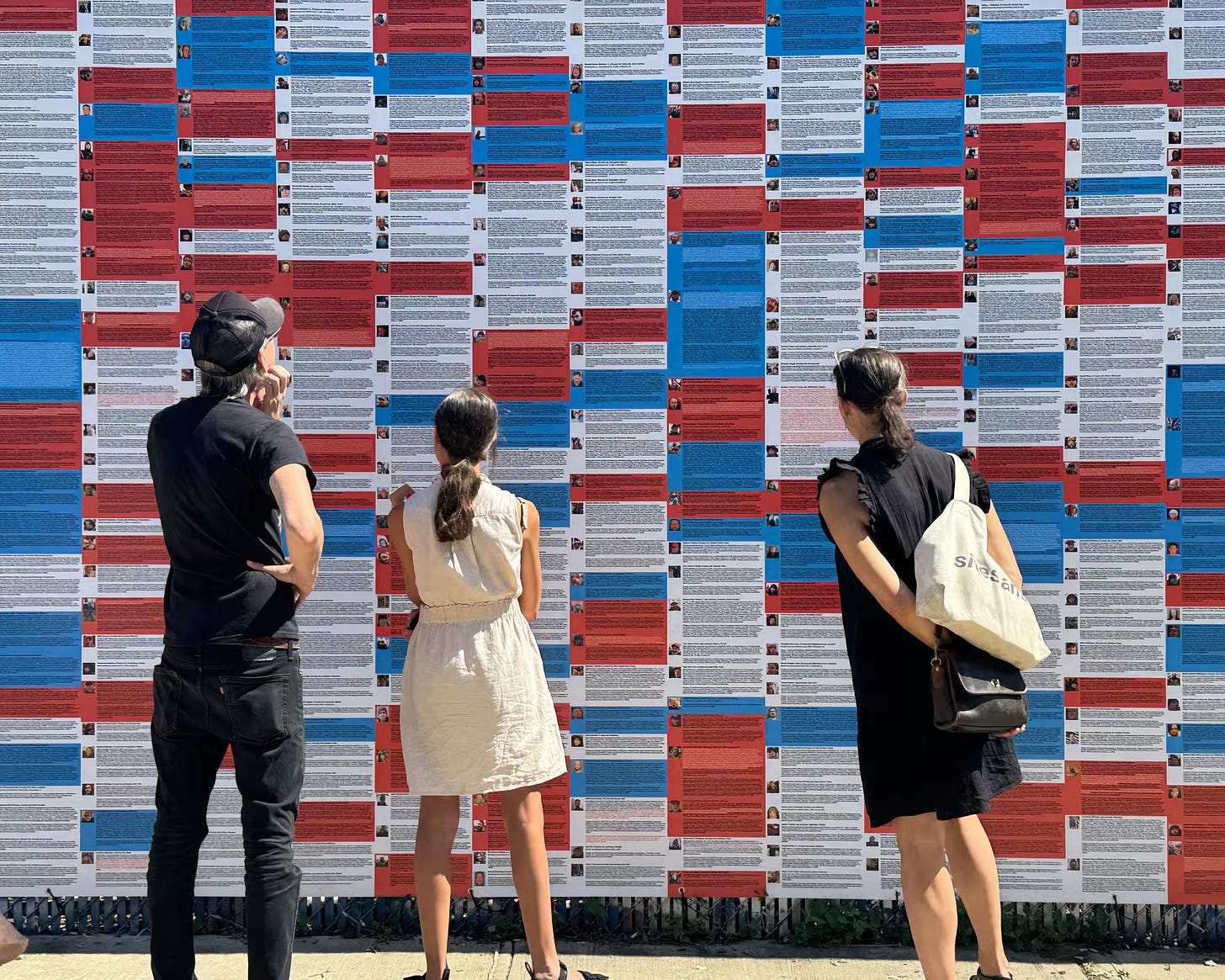

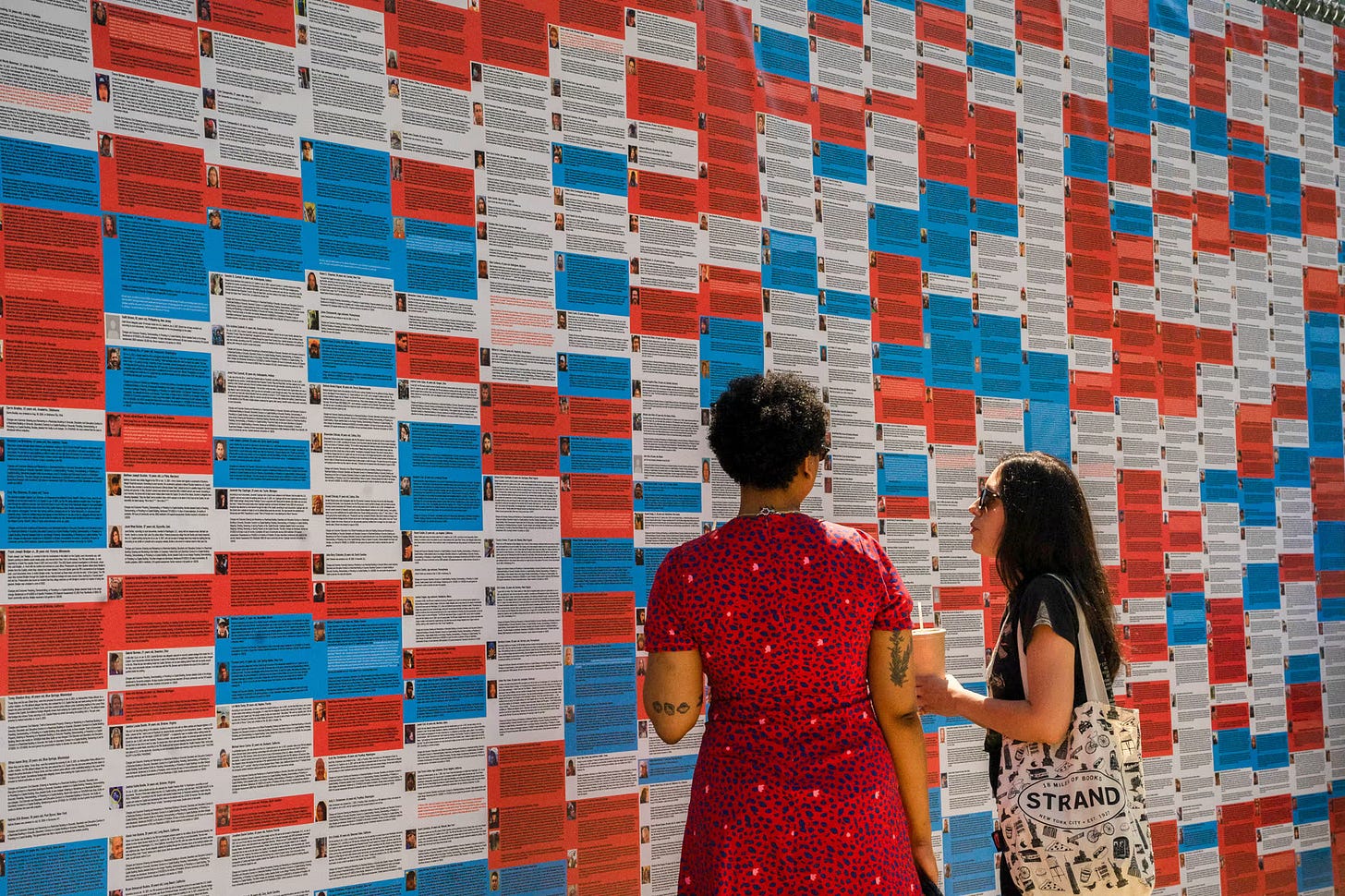
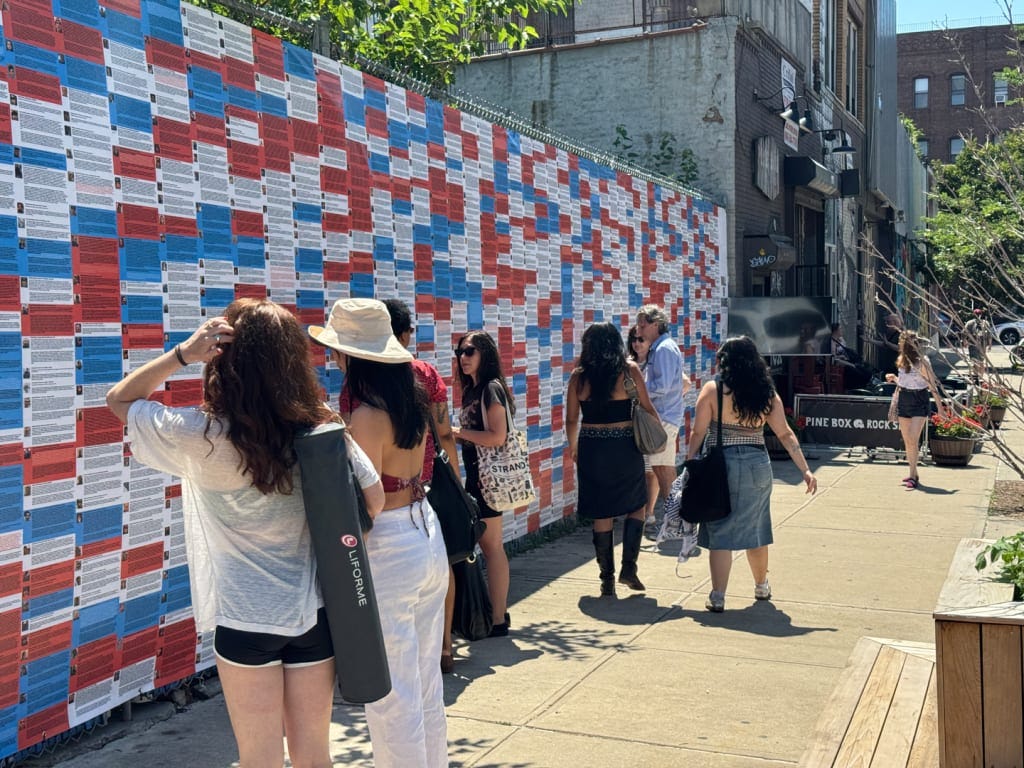
As a life-long political activist who has used a variety of mediums to create my art, I'm troubled about the current movement afoot in many circles of our resistance movement to limit the use of AI in our resistance art. Don't get me wrong, I am well-schooled in its impacts on the environment, communities of color, and empowerment of the Oligarchy; and as a result, I use it very sparingly in my art. Regardless, I think our resistance movement is no better than the powers we oppose if it begins to tell artists which mediums they can or can not use in their work. Authoritarians have long tried to control and use the arts to promote their agenda. Our movement is anti-authoritarian, and as such, we should be cautious in following in their footsteps, even if we don't like the methods, means, or tools artists choose to conduct their work. My preference is to give artists the latitude to do their art and let their audience decide if they like the end product or not.
Truly IMPORTANT contribution to history of our culture. ART expresses an evolving process. I hope WE can Evolve into BETTER!🙏💦💔🌈